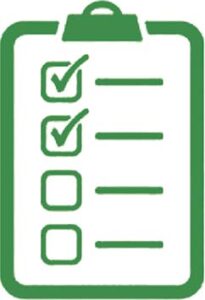Pride in June, Black History in February, Ice Cream in July, Poetry in April, Breast Cancer Awareness in October, Noodles in March.
National “Months” – some serious, some just for fun – are typically spent educating and celebrating.
We observe National Preparedness Month each September (which is also, incidentally, the national month for Honey, Guide Dogs, Childhood Cancer, and Gospel Music Heritage). Established in 2004, the goal is to raise awareness about the importance of – you guessed it – preparing for disasters and emergencies.
Sometimes the word “preparedness” seems both concrete and abstract, a good idea but also somewhat off-putting. Could it be that because emergencies are often uncontrollable and infinitely unique, it is easier to sweep thoughts of preparation under the rug, instead accepting whatever comes and managing in real-time? What if we thought about it differently by replacing the word preparedness with something similar: forethought, anticipation, planning, far-sightedness, enable, map out, strategize. Perhaps this changes the feel and makes it more personally meaningful.

Why is there so much focus on asking us as individuals to be prepared anyway? The idea is that the more ready we are to react and stay safe in an emergency event, the less harm we will experience. Makes sense. Even bigger picture, if we can be somewhat self-sufficient during and immediately after an emergency, our public organizations (think: fire and rescue, law enforcement, local and federal governments, medical and utility providers) can turn their attention to broader post-emergency problems, like restoring public services and repairing infrastructure.
While the idea of celebrating “preparedness” all month may spark less excitement than, say, bourbon, sewing, or mushrooms (also September), I think we can all find a few ways to celebrate exercising our forethought this year (cue remembering ice storms, fires, and heatwaves). Here are some ideas:
1. Neighbors
One silver lining of the pandemic has been getting to know my neighbors (shout-out to my awesome cul-de-sac crew). As we went outside to escape the indoors, we waved, chitchatted, went on walks around the block, and fed pets during weekends away.
As emergencies and extreme weather piled on top of COVID, I learned what we collectively “have” as a street. One neighbor has extendable clippers for reaching high up branches, one has a generator, one knows radios, one loves Costco (bulk food!), and one has every tool you can think of.
However, I’ve realized that the most important resource to have on hand during an emergency isn’t any of the stuff my neighbors have – it is my neighbors themselves. I know that I have people who will walk next door, across the street, or down the road to check in on me and my family during the next emergency. Knowing this offers a sense of security that I didn’t realize I needed. This feeling is backed up by research – communities with strong social connections are more likely to recover quickly after an emergency event.
Start saying hello to those who live nearest you. Exchange contact information. Better yet, in the spirit of anticipation, host a virtual or in-person Neighborhood Ready Meeting. These are free and focus specifically on emergency planning for neighborhoods (www.tualatincert.org/tualatin-ready).
2. Lists
I love a good list. There are MANY resources and checklists that a quick internet search will bring up. If you want to be official about it, start with www.ready.gov, which is the home of National Preparedness Month. If quick and easy lists are your thing, check out Take 5 To Survive, a website devoted to 5-minute preparedness tasks put together by our very own Washington County Emergency Management Cooperative (www.take5tosurvive.com).
3. The five-gallon bucket
An unsung hero of emergency far-sightedness. There are so many things you can do with a five-gallon bucket!
Use it as your emergency kit. See the aforementioned lists for an exciting variety of things you can store in your bucket.
Learn about the ins-and-outs- of using buckets as emergency toilets. Fondly known as “Pee and Poo” buckets, the Regional Disaster Preparedness Organization has free how-to guidebooks, bucket stickers, and materials lists (rdpo.net/emergency-toilet).
If you’re tight on space, use your prepped bucket as extra seating. Bonus – a conversation starter as to why you have a bucket in your living room.
4. Alerts and Info
This one is easy. Take a few minutes to sign up for emergency alerts and know where you can get information. Most alerts can be sent via text, email, phone call, voicemail, and landlines.
- Public Alerts (www.publicalerts.org)
- Washington County Public Alerts (www.wccca.com/PublicAlerts)
- Clackamas County Public Alerts (www.clackamas.us/dm/publicalerts)
- Tune into radio stations like 91.5 KOPB-FM or 101.1 KXL-FM for Portland area news.
5. For local information, visit
www.tualatin.gov and/or follow
@cityoftualatin and @tualatinpolice on Facebook, Instagram, Twitter, and NextDoor.
Happy National Preparedness Month!


















